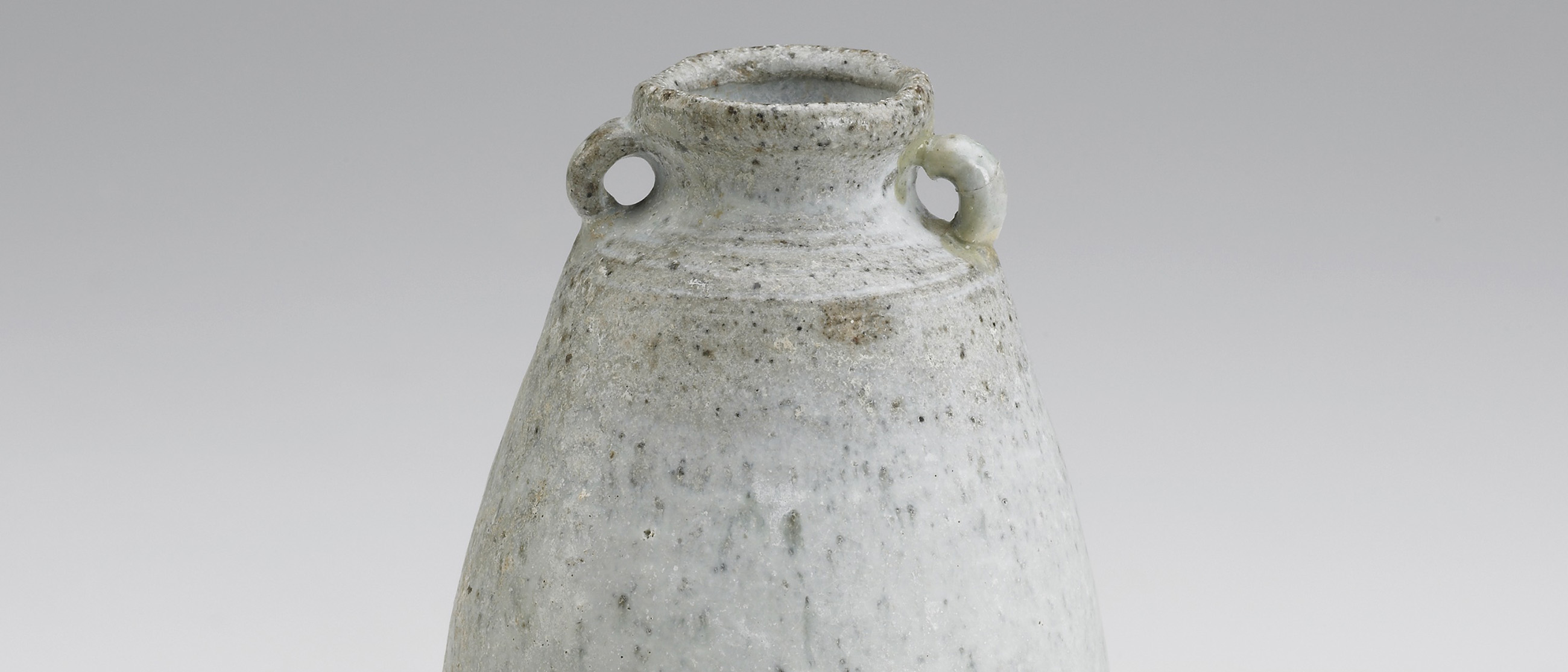WHITE GLAZE
View all related objects in the collections
Two versions of a distinctive opaque white glaze (as opposed to a translucent or transparent glaze appearing “white” over a white slip or a pale clay body) occur in Mainland Southeast Asia. Although differing in composition, the two variants were used on vessels of similar form and decoration in roughly the same time period. They may be different technological responses to a common source of inspiration—Chinese cobalt-decorated porcelain.
Opaque white glaze was used on earthenware speculated to have been made in Lower Burma (Hein 1995). This ware first came to attention in the 1980s, when examples were found in grave sites excavated along the Thai-Burmese border (Shaw 1986, 1987, Brown 1988; Machida City Museum 1996); no examples are included in the Freer and Sackler collections. The white glaze is composed of lead and silica and is opacified with tin (between 25 and 37 percent lead monoxide; between .18 and .58 percent tin dioxide) (Emoto and Hasebe 1986, Yamazaki et al. 1989, Yamazaki and Murozumi 1990/91–93, Yamazaki 1996). It has been suggested that this use of opacified lead glaze was introduced to Burma from West Asia (Di Crocco and Schulz 1985). Another variant of lead-glazed earthenware was made in Arakan in the sixteenth and seventeenth centuries (Hein 1995, Tsuda 1999). The relationship between the two products is not yet understood.
Applied over vessels made from a red earthenware body—dishes with wide unglazed bases, bowls, footed bowls and dishes, and small jars—the glaze seems to have been intended to replicate the appearance of porcelain. Some vessels are monochrome white, green (tinted with copper), or reddish-brown (tinted with iron), while others are adorned with “inglaze decoration” applied by trailing copper-green-tinted glaze over the white glaze before firing. The vessel shapes and the format of the decoration suggest a relationship to Chinese cobalt-decorated porcelain of the late Ming dynasty, and thermoluminescence (TL) dates give a range from the second half of the sixteenth century to the early eighteenth century (Yamazaki 1996). Vessel shapes and designs also bear a resemblance to the Sawankhalok wares of the Late Stoneware (LASW) phase, associated with the fifteenth and sixteenth centuries.
A matte, opaque white glaze was applied to Sawankhalok stoneware made at the Pa Yang kiln group. The high-temperature glaze was formulated with low alumina (58.5 percent), high magnesium (3.6 percent), high calcium (21.6 percent), and high phosphate (3.3 percent) (Hein 2001, 296, averages of eleven samples). According to Roxanna Brown (1993, 46), “the secret to the white glaze of Sawankhalok was the addition of what in Thai is literally called ‘horse-tooth stone.’ What exactly this ingredient was, it did contain a high calcium content.”
The white glaze was used alone on footed bowls, alms bowls, narrow bottles with loop handles, and small, round jars with four lugs on the shoulder and a domed lid. It was also used in combination with a golden-brown glaze in the format sometimes called “pearl and brown”; both glazes were applied with a brush over finely detailed incised decoration, most typically on covered boxes. Evidence from known shipwrecks suggests that opaque white glaze began to be used at the beginning of the sixteenth century and continued through the early seventeenth century, when export tapered off (Brown 2004). A precedent for the high-temperature opaque white glaze used on Sawankhalok ware may possibly be found in the “moon white” glaze used on stoneware made at the Shiwan (Shekwan) kilns in Guangdong province. It might be reasonable to propose transmission of this stoneware glaze via Chinese merchants trading in Sawankhalok ceramics in Ayutthaya.

